Al-Ola Abdallah, Associate Professor and Plasma Cell Disorder Program Director of the Division of HMCT at the University of Kansas Medical Center, shared a post on X about a recent paper by Ashraf Badros et al. published in Blood Journal:
Authors: Ashraf Badros, Laahn Foster, Larry Anderson, Jr, Thomas Lin, Peter Voorhees et al.
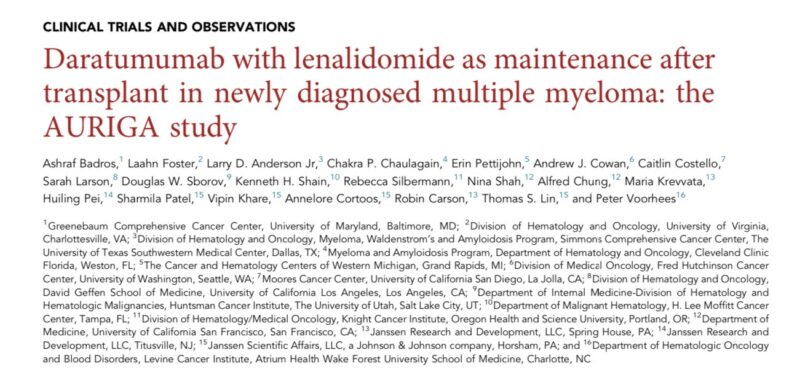
“A thread on AURIGA Study.
The study aimed to determine if adding daratumumab to standard lenalidomide maintenance would improve outcomes in MRD-positive patients with at least VGPR post-ASCT
Phase 3, Randomized, Open-Label Trial: A multicenter study randomizing patients 1:1 to D-R or R maintenance.
Eligibility:
- Patients with NDMM 18-79 years old
- Had received ≥4 cycles of induction therapy
- ASCT within 12 months
- Achieved ≥VGPR and were MRD-positive (10^-5)
- Are anti-CD38-naive post-ASCT
Stratified by cytogenetic risk (standard/unknown vs. high risk – defined as del(17p), t(4;14), and t(14;16))
Median treatment duration was longer in the D-R arm (30.7 months) compared to the R arm (20.6 months).
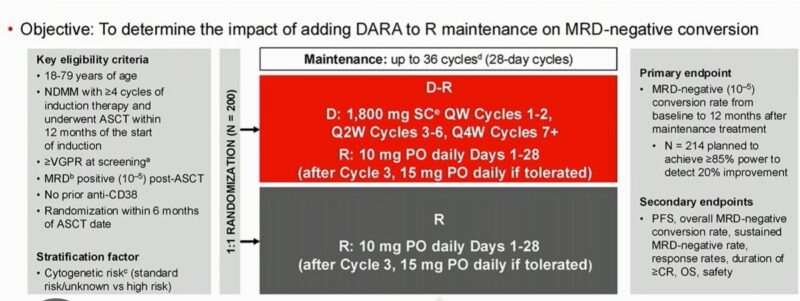
Primary Endpoint: MRD-negative conversion rate at 12 months after maintenance treatment.
MRD assessed via NGS at a threshold of 10^-5.
Secondary Endpoints: PFS, overall MRD-negative conversion rates, sustained MRD negativity, and safety.
Overall MRD-negative conversion: Higher for D-R (60.6%) vs. R (27.7%).
MRD negativity at 10^-6: Significantly higher with D-R (23.2% at 12 months, 36.4% overall) vs. R (5.0% at 12 months, 12.9% overall)
Rate of sustained MRD negativity lasting ≥6 months ~2.5 times higher with D-R
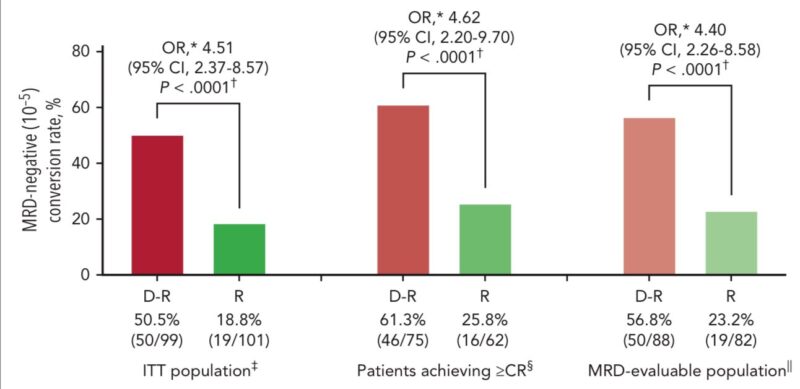
Rate of sustained MRD negativity lasting ≥12 months higher for D-R (17.2%) vs R (5.0%)
Significantly more patients achieved ≥CR with D-R (75.8%) vs R (61.4%)
Favored D-R with a 47% risk reduction in disease progression or death. Estimated 30-month PFS: 82.7% for D-R vs 66.4% for R.

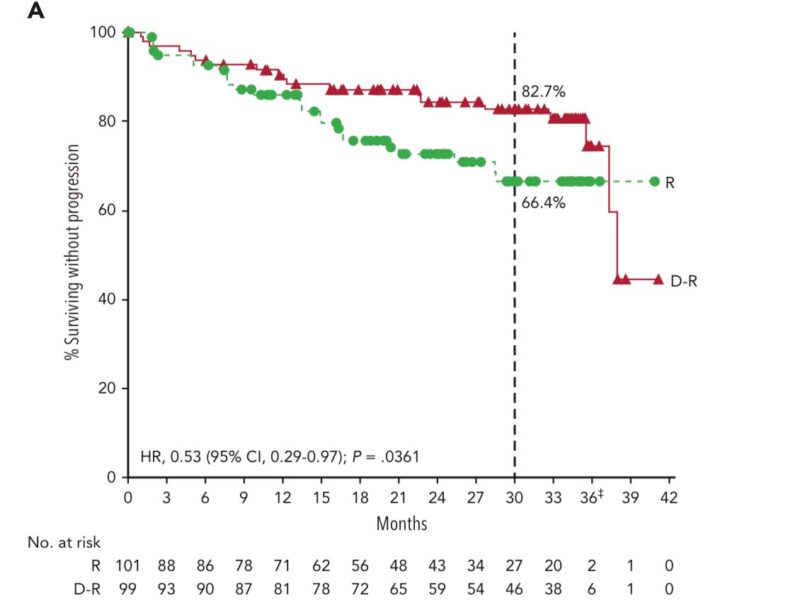
Treatment-related adverse events (AEs) of any grade were very common in both groups (99%)
- Grade 3/4 AEs were slightly higher in the D-R arm (74.0% vs 67.3% in R)
- Cytopenias (including neutropenia) and infections (including pneumonia) were more common with D-R.
- SPMs were slightly more frequent in the D-R arm (7.3% vs 4.1%)!!
- More patients in the D-R group had AEs leading to discontinuation.
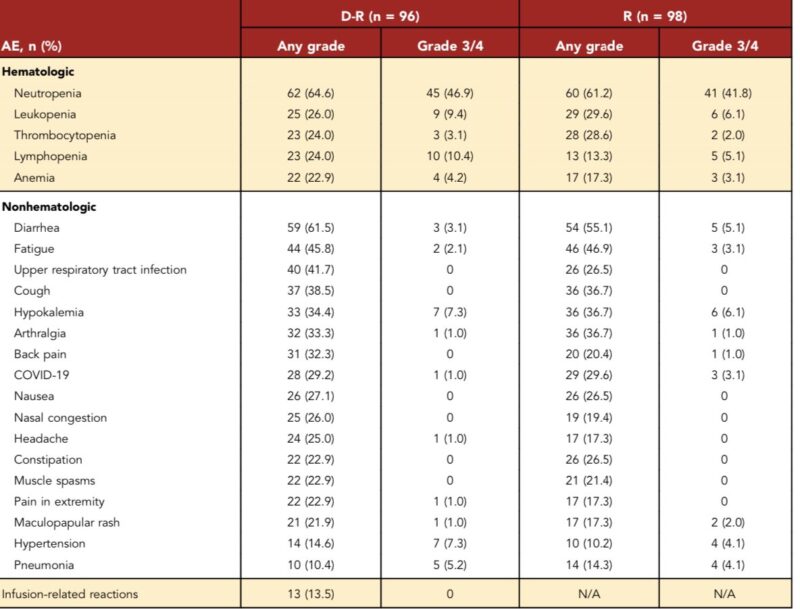
Limitations:
- Anti-CD38-naïve inclusion criteria limited recruitment.
- Imbalance in high cytogenetic risk between D-R and R groups due to erroneous assessments.
- Many patients have not reached the 24- and 36-month MRD assessments due to the study protocol evaluating MRD at cycle milestones rather than fixed time points.
The AURIGA study provides strong evidence that D-R maintenance significantly improves outcomes in transplant-eligible NDMM patients who are MRD-positive and anti-CD38-naïve post-ASCT.
There is a need to further investigate whether the benefits of D-R maintenance extend to patients receiving daratumumab-based induction therapies!”
More posts featuring Al-Ola Abdallah.
